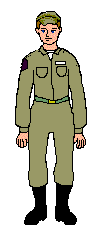Current Affairs
THE WAR IN AFGHANISTAN - DESPITE A PAUSE, THE WAR STILL CONTINUES AND THE PROBLEM EXISTS
The war in Afghanistan began on 27 April 1978, when the PEOPLE DEMOCRATIC PARTY OF AFGHANISTAN took power in a military coup, known as the Saur Revolution. Most of Afghanistan subsequently experienced uprisings against the PDPA government. The Soviet war in Afghanistan began in December 1979 to replace the existing communist government. Afghanistans resistance forces, known as the mujahideen, fought against the Soviet intervention in Afghanistan. Some factions received support by the United States, with the Pakistani ISI serving as the U.S. middleman, and Saudi Arabia. The Soviet Union had to withdraw its troops in February 1989. The Soviet backed Afghan communist government survived for three more years until the fall of Kabul in 1992.
In 1992, the Afghan political parties agreed on the Peshawar Accords which established the Islamic State of Afghanistan and appointed an interim government. Militia leader Gulbuddin Hekmatyar was opposed to the agreement and with Pakistani support started a bombardment campaign against Kabul. Additionally, three militias who had been able to occupy some suburbs of Kabul engaged in a violent war against each other. Regional powers such as Pakistan, Iran, Saudi Arabia, India and Uzbekistan seeking influence over the geostrategically located Afghanistan each supported and in some cases controlled one of those militias. While Kabul and some other major cities witnessed most of the fighting during that period most of the more rural parts of Afghanistan, which had seen especially massive bombardment by the Soviets and Communists, remained relatively calm. In late 1994 early 1995 as the Islamic States minister of defense Ahmad Shah Massoud had been able to defeat most of the militias militarily in Kabul and had restored some calm to the capital, the Taliban emerged as a new faction threatening Kabul.
The Taliban had initially emerged as a new force in the southern city of Kandahar conquering many southern and central provinces not under Islamic State control in the course of 1994. In early 1995, as they launched a major operation against the capital Kabul, they suffered a devastating defeat against the Islamic State forces of Massoud in what many analysts saw as the movements end. By 1996, however, they had regrouped with massive military support by Pakistan and financial support by Saudi Arabia. In September 1996 they took power in Kabul and established the Islamic Emirate of Afghanistan. The United Islamic Front (Northern Alliance) was created under the leadership of Ahmad Shah Massoud as a military political resistance force against the Taliban Emirate which was backed militarily by Pakistans Army and enforced by several thousand Al Qaeda fighters from Arab countries and Central Asia.
Following the September 11 attacks in the United States in 2001, NATO invaded Afghanistan under Operation Enduring Freedom. The purpose of this was to defeat Al-Qaeda, to remove the Taliban from power, and to create a viable democratic state. Although some of these objectives were achieved, a protracted and costly period of intervention followed and continues as of to date.


